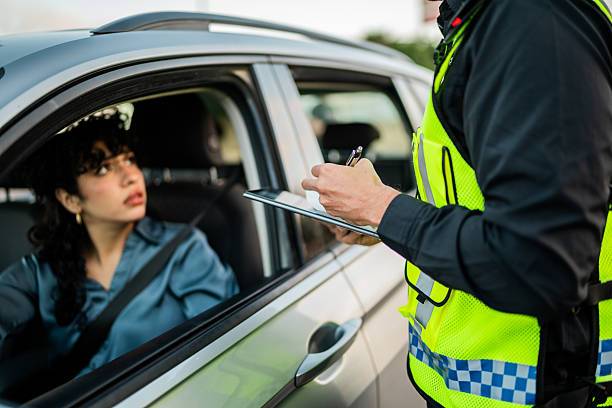by Haoxin Safety
Share
by Haoxin Safety
Share

Every day, millions of people work alongside moving traffic, a reality fraught with peril. For road crews, emergency responders, and police officers, the line between a routine shift and a tragedy can be as thin as a driver’s momentary distraction. In these high-stakes environments, one piece of equipment stands as the simplest yet most crucial lifesaver: the high-visibility safety vest.
The Science of Standing Out
At its core, a traffic safety vest is a marvel of material science, designed to command attention in all lighting conditions. Its effectiveness lies in a two-pronged approach: fluorescent colors for daytime and retroreflective materials for the night.
Fluorescent materials, in vibrant shades of yellow-green or orange, work brilliantly under the sun. They absorb non-visible UV light from the sun and re-emit it as longer, visible light waves, making the fabric appear to glow. This effect makes the wearer highly conspicuous against most backgrounds, especially during dawn and dusk when light is low.
When darkness falls, a different technology takes over. A high-quality traffic reflective vest is equipped with strips of retroreflective material. Unlike a mirror that scatters light, retroreflective surfaces use tiny glass beads or microprisms to bounce light directly back to its source, such as a vehicle’s headlights. This creates a powerful, focused beam of light visible only to the person near the light source, making the wearer appear brightly illuminated to an approaching driver.
Setting the Standard for Safety: ANSI/ISEA 107
Not all safety vests are created equal. The American National Standard for High-Visibility Safety Apparel, or ANSI/ISEA 107, is the benchmark for quality and performance. This standard specifies the minimum amount of fluorescent background material and retroreflective tape, as well as their placement on the garment, to ensure 360-degree visibility.
The standard outlines different types and classes based on the work environment:
- Type O (Off-Road), Class 1: For workers in low-traffic areas, like parking lot attendants.
- Type R (Roadway), Class 2 & 3: For those working on or near public roadways. Class 2 is for speeds under 50 mph, while Class 3 is for high-speed environments and requires more coverage.
- Type P (Public Safety): This class is specifically designed for emergency, incident response, and law enforcement personnel.
The Professional’s Choice: The Police Vest
For law enforcement officers directing traffic at an accident scene or conducting a roadside stop, visibility is paramount. The high-visibility police vest is an essential piece of gear, often designed to meet Type P standards. These vests are engineered not only for maximum conspicuity but also for functionality. Features like a five-point breakaway design prevent entanglement, while microphone tabs and specialized pockets ensure that an officer’s tools are always accessible without compromising safety. While many officers are mandated to wear them, studies show that consistent use of high-visibility apparel can significantly reduce the risk of traffic-related injuries and fatalities.
An Investment in Life
The data is clear: being visible saves lives. Studies have shown that wearing high-visibility clothing can significantly reduce accidents for cyclists and pedestrians. One study found that motorcyclists wearing high-visibility gear are 37% less likely to be involved in a crash. For workers on foot, the statistics are just as compelling, with a significant percentage of work zone fatalities involving pedestrian workers being struck by vehicles, often due to poor visibility.
Whether it’s a professional-grade traffic safety vest for a road worker, a specialized police vest for an officer, or a simple traffic reflective vest kept in a personal vehicle for emergencies, this unassuming garment is a critical investment. It ensures that when you need to be seen the most, you won’t blend into the background. In the complex dance of traffic, it’s your best defense—a bright beacon in a world of motion.
